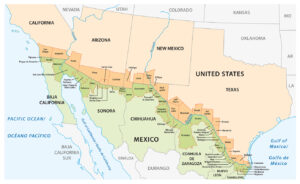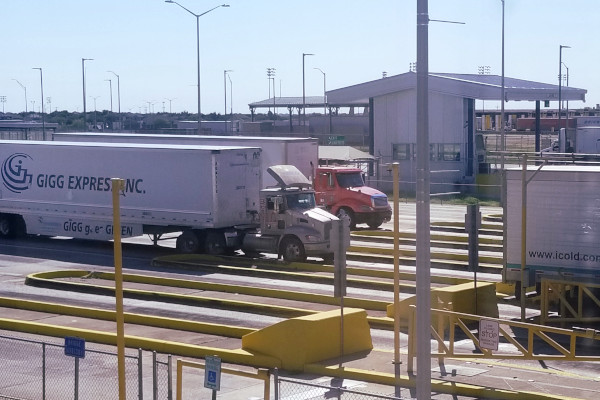USMCA v. NAFTA By Jacob Wenzel
For most countries, the aspiration is for the generation and accumulation of wealth for their citizens and governments. Until the beginning of the 20th century, many countries believed that the best way to achieve the creation of wealth was by being entirely self-sufficient and without reliance on other countries. It may seem natural to believe that producing all of the goods that a country needs by itself is the best way to go about creating wealth when the exact opposite is true. Trading with countries that have a comparative advantage when it comes to the production of certain goods and services is beneficial to all countries involved. Trade allows each country to produce goods and services where they have raw materials and expertise.
Global trade proved to be extremely beneficial for countries growing wealth from 1950-2021. During this period, the amount of global trade ballooned to nearly 4,300 percent. The positive impacts of engaging in trade cannot be understated, however, global trade over time is not without its negative ramifications. During the pandemic for example, America’s dependence on global sourcing led to shortages of industrial and consumer products such as PPE (gowns, gloves, face masks), industrial goods, toilet paper, Clorox wipes, and other products.
A lack of understanding of basic economics and the more recent public backlash over globalization have also had an effect. In America, the perspective is that China is no longer a low-cost haven for manufacturing. Politicians have imposed legislation restricting imports and layering on import tariffs. During the Trump administration, penalty tariffs of up to 25% were imposed on aluminum and steel, and most goods coming from China. These tariffs are still in place today under the Biden administration. Tariffs have proven to be economically detrimental and have created long-lasting effects on geopolitics. Conversely, for America’s allies, the U.S. has created a system of “Most Favored Nations” status and Free Trade Agreements that allow for low or zero import tariffs.
A notable example of a free trade agreement was the North American Free Trade Agreement or NAFTA, that took effect on Jan 1, 1994. NAFTA was a trilateral agreement between the United States, Mexico, and Canada that was implemented to promote trade between the countries. The agreement was beneficial because it lowered the prices of many goods, stimulated diplomatic relations between the countries, and created nearly 200,000 export/import-related jobs. NAFTA drawbacks were also exposed including a loss of nearly 400,000 US manufacturing jobs, the destruction of many small Mexican farmers and other small businesses that could not compete with larger operations, and low environmental and labor standards.
In 2020, NAFTA was replaced by the United States-Mexico-Canada Agreement or USMCA. The USMCA is similar to NAFTA but is updated to include e-commerce and other changes in businesses over the past 30 years. All three of the countries benefit from cross-border trade, with perhaps the U.S. benefiting the most.
The three-country USMCA is similar to other global trading blocks including the European Union (EU) and the Association of Southeast Asian Nations (ASEAN). Geopolitics plays an important role in these trading blocks.
Today, American companies are actively rethinking their global manufacturing strategies and moving out of China – often to Mexico. Recognizing this migration, Chinese factory owners and investors have begun to establish manufacturing facilities in Mexico, particularly along the U.S.-Mexico border with California, Arizona, New Mexico, and Texas. If these factories source raw materials in Mexico and use Mexican labor, their manufactured products may be eligible for duty-free entry into the U.S. under the USMCA.
The cross-border trade between the U.S. and Mexico has significantly increased as a result of USMCA and the shifting global manufacturing strategies. Evidence of this boom at the border is recognized in the increasing trade statistics, commercial traffic crossing into the U.S. and the land and commercial development on both sides of the border. All of this is tied to wealth-building and development in each of the three USMCA countries. All countries benefit when trade is free and responsive to the marketplace.
ABOUT THE AUTHOR
Jacob Wenzel is an intern at the Reshoring Institute and a senior at the University of San Diego where he is pursuing a degree in both political science and international business.
He has recently returned from a study abroad program in Tokyo, Japan where he studied the international business practices of many Asian countries. This trip established Jacob’s love for travel and no matter where his work takes him he is excited to learn more about people and cultures. Jacob is a part of several clubs/school lead organizations on campus including the international school’s mentoring program and the USD radio club where you can tune into his radio show every week. Outside of school, Jacob has worked at several law firms and political campaigns as well as other jobs like a local pizza shop in San Diego. After graduation, Jacob wants to explore the international business world further before applying to law school.




